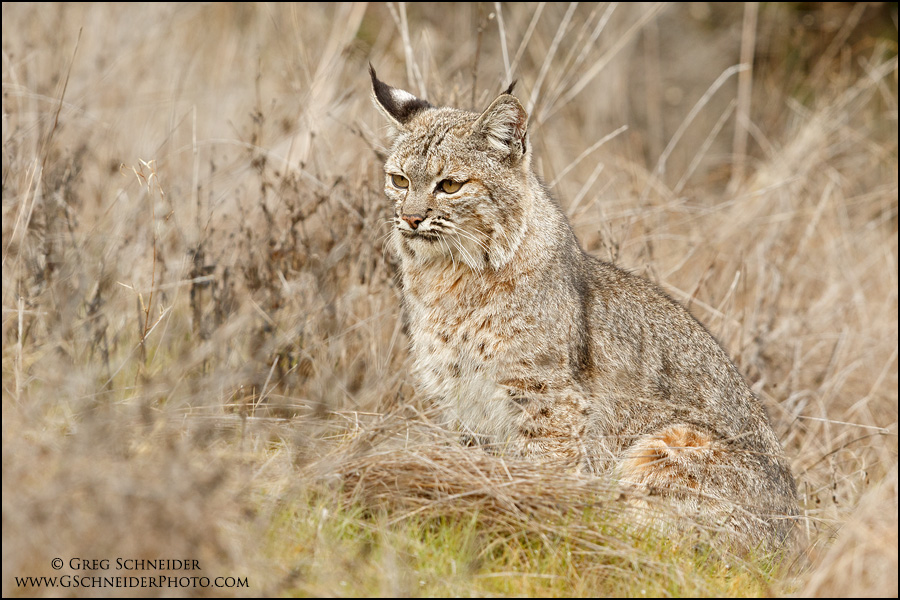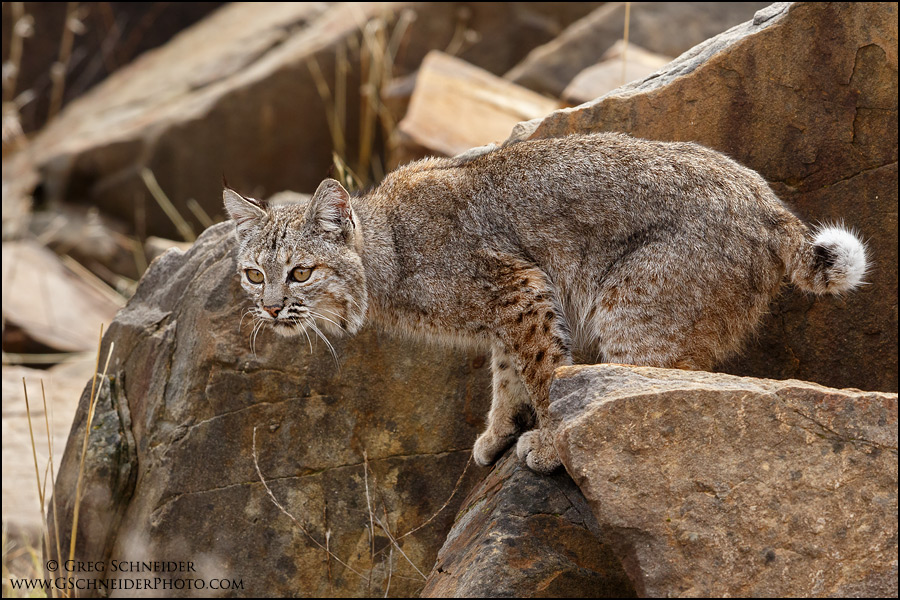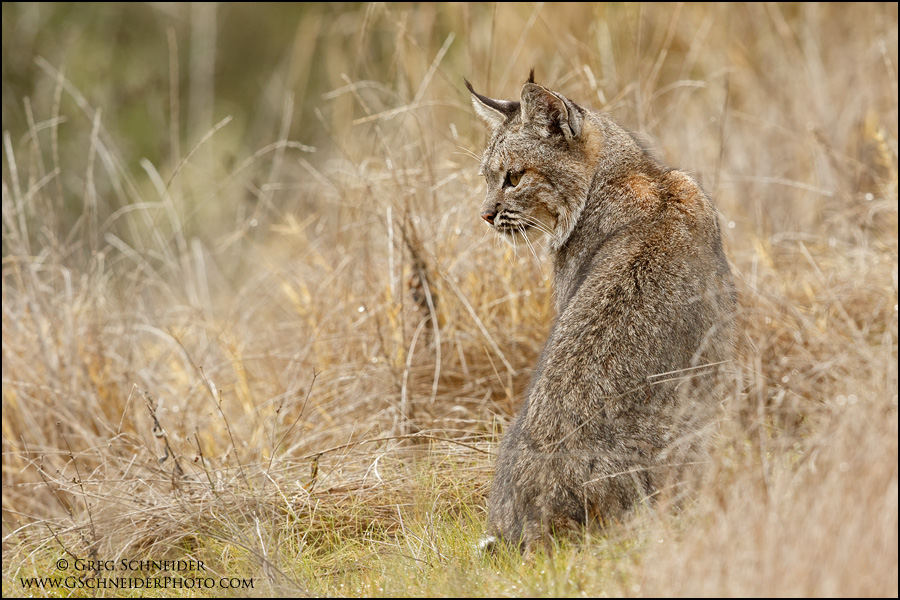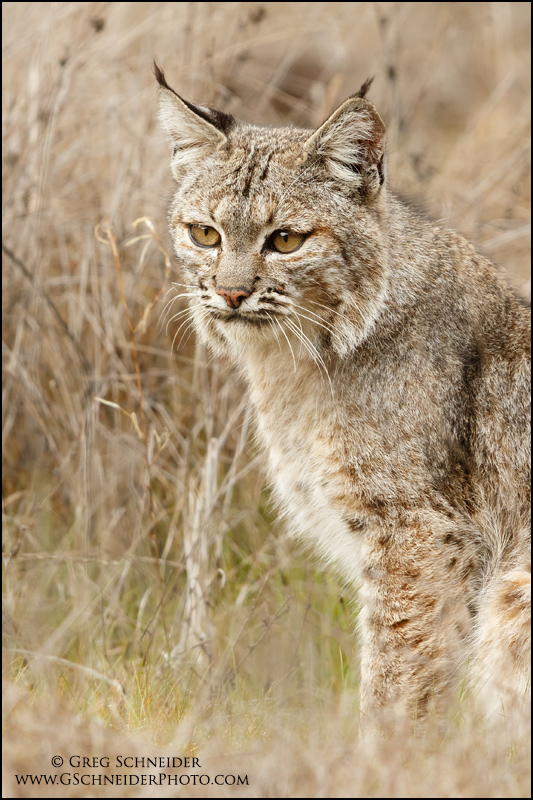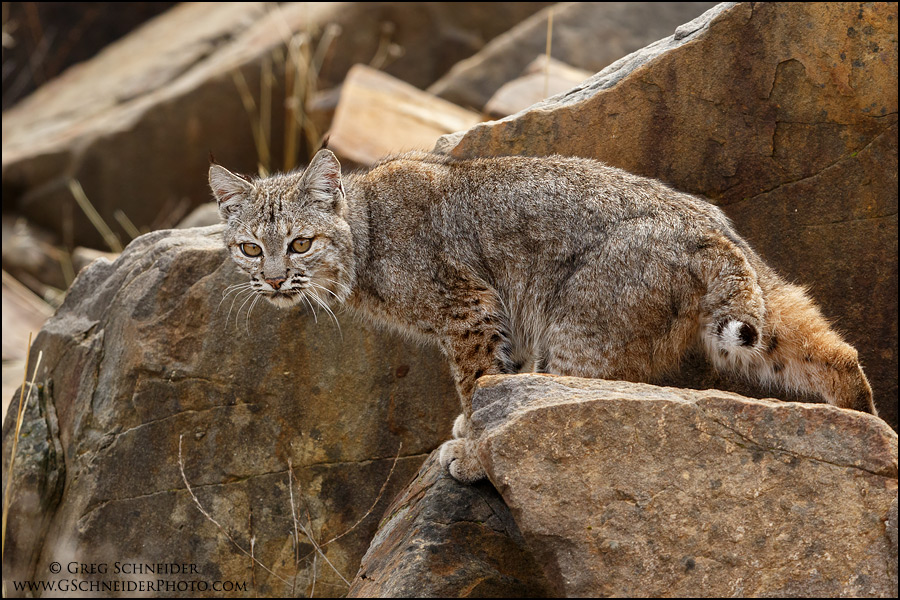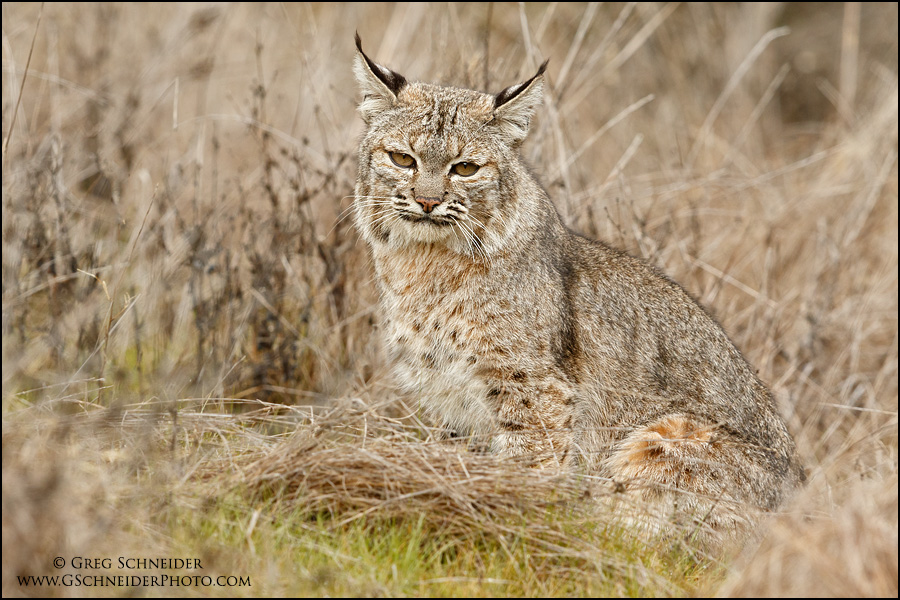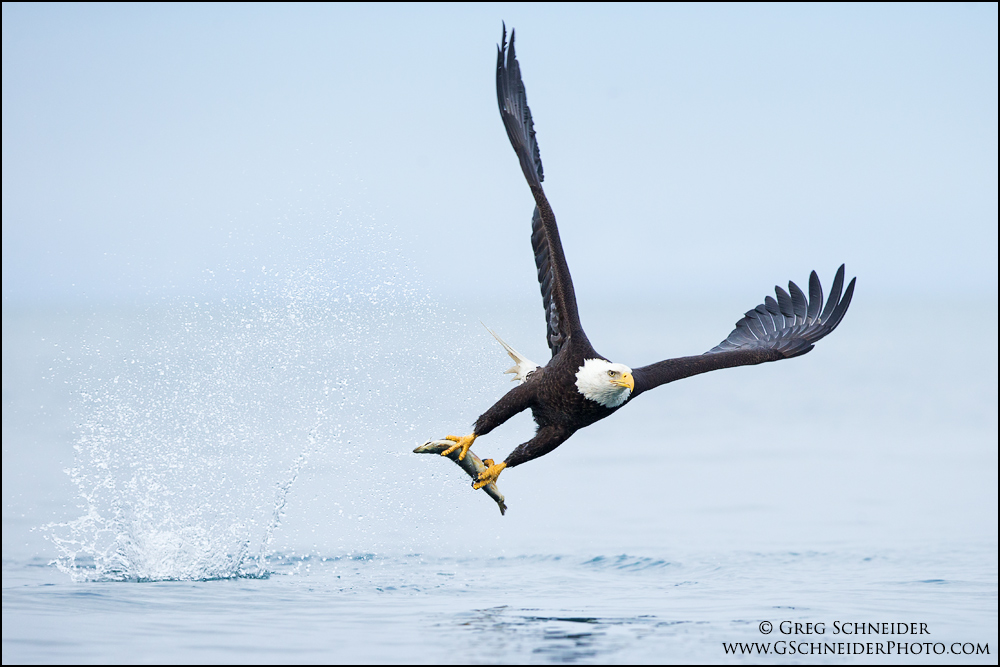Category: Trips
Bobcat encounter
A few weeks ago while photographing birds in Central California’s scenic oak woodlands, my peripheral vision picked up movement closer to the parking lot. I quickly swung the camera around, thinking the fuzzy shape might be a fox, but to my astonishment saw the characteristic cat shape and tail of a bobcat. This was an animal I had never seen before, and was not expecting to obtain any good photos before it disappeared.
I quickly caught up to it as it began navigating its way down a boulder-strewn hillside. At this point I was able to photograph a few look back poses, and I started to plan where to position myself next. I had a rough idea of where the cat might be going, and was able to quickly walk ahead on an adjacent trail. As expected, the bobcat began walking through a grassy meadow after making its way down the boulders. It paused a few times, seemingly scanning for prey, and completely tolerant of my presence. It eventually sat down for a few minutes, then without warning ran off and could not be relocated.
In total I had 8 minutes with this individual, and I’m really pleased with the range of poses and photos I was able to capture in such a short length of time.
Bald Eagle preview
Back from my roadtrip
For the past few weeks I’ve been on the road, concentrating on nothing but bird photography. The focus of my trip was Florida, and particularly for birds and associated activity that was more specific to this time of year. I traveled nearly 10,000km and came back with over 300GB of photos (after initial evening culling sessions). Generally, most birders visit Florida earlier in the year, but in early May there are many different opportunities for rookery activity, baby chicks of many sorts and several species that are generally only present in summer, including the black-necked stilt and least tern. I made Snowy Plover and their chicks a major target, and am happy to say I more than met my goals for capturing images of both them and Wilson’s Plover with chicks, not to mention baby burrowing owls! You can see a rough video of their antics here.
My only regret is that I couldn’t spend more time in Florida and visit a few other areas. I lost a few sessions to weather, but overall weather was conducive to bird photography, if a bit windy at times, making it difficult to achieve photos on calm water. I managed to visit most of the hotspots in Florida, including St. Augustine rookery, Viera Wetlands, Cruickshank Sanctuary, Blue Cypress Lake, Kissimmee Prairie, Merritt Island, Fort de Soto, Venice Rookery, Bunche Beach, Lido Beach, Tigertail Beach, Little Estero Lagoon and Cape Coral. Whenever I return, I would like to make a point of visiting Joe Overstreet and area (snail kites), the Everglades (earlier in the year is better), and Merritt Island (also better earlier), and Wako/Lox/Green Cay.
On my way home I spent some time in West Virginia photographing warblers with Jacob Spendelow. It was a very fun and rather productive weekend, with several lifers for me. Currently vegetation is quite advanced in southern Ontario and makes deciduous forest shooting more difficult. I plan to work on some targets locally, and perhaps warblers within a few hours of home for the next few weeks. It’s hard to believe that the peak of spring bird activity will be winding down by the end of the month.
Strix nebulosa
In my opinion, one of the most appropriate Latin names for any bird is that of the Great Gray Owl: Strix nebulosa. The species certainly has a nebulous character, roosting deep in dense woods, and only appearing at the edges of open areas near dawn and dusk to hunt, which makes it rather hard to find with the limited hours of daylight in the winter. Once one actually locates this owl, it is immediately evident that though it seems very lethargic, it is extremely aware of all that is happening in its surroundings. For instance, it is very possible to have them suddenly launch off their perch only to catch a vole under a few feet of snow. They show very little fear of humans; there have been many photos posted showing people standing right next to a Great Gray Owl. When in flight, their wingspan is truly impressive.
They tend to come south in any good numbers only once every few years, when the vole population crashes further north. The large invasion in the winter of 2004-2005 was well documented, but in the years since then there haven’t been too many that came south.
This past winter I was able to get numerous photos of a pair of them that wintered near Ottawa; most photos are from a trip in February with Alex Mody.
Michigan trip
I’m back from my trip to Michigan. It was slightly over a week long, and the main goal were loons. I spent most of my time near Rogers City in an area known for tame and approachable loons and also made stops in Grayling for Kirtland’s Warbler, and Ann Arbor for grassland birds that are not easily found in Ontario. I headed home via Sauble Beach for a quick hour of Piping Plover photography.
I took about 6000 photos during my trip, and it will definitely take me some time to go through them! That said, I will try to post a few favourites soon.
Songbird photography is now essentially over, with birds well into raising young, ceasing to sing and vegetation becoming thicker. My focus is shifting to photographing grassland and waterbirds before the shorebirds begin appearing in a few weeks on their southward migration.
